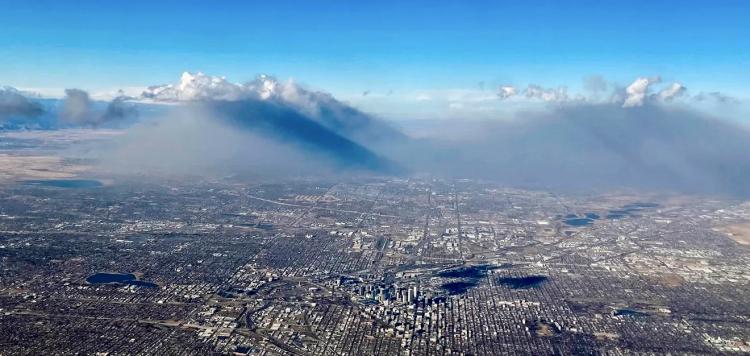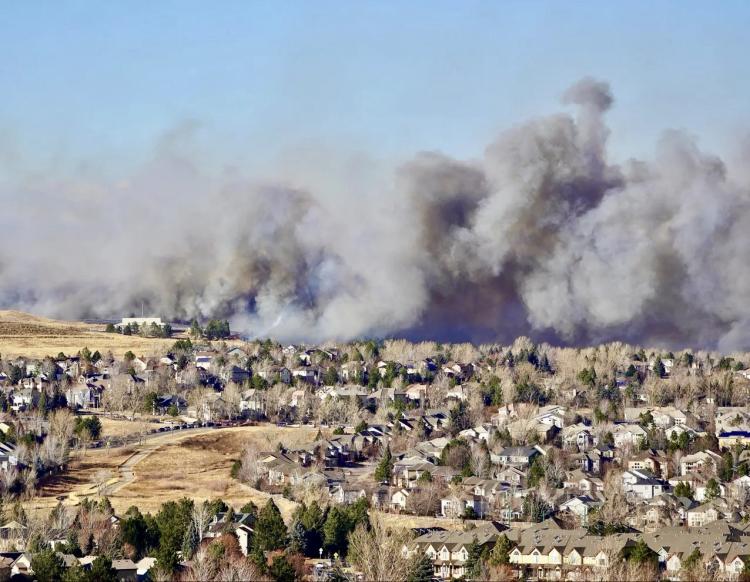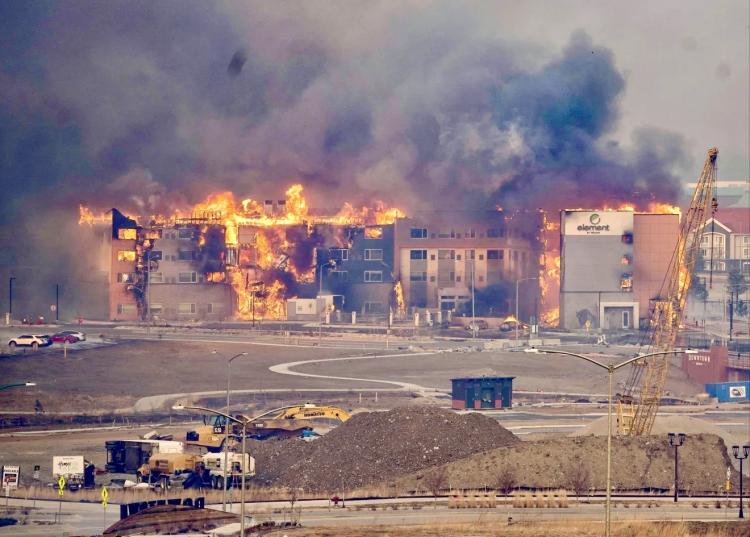Dr. Colleen Reid, an assistant professor in Geography, has published many studies that research the air quality and associated health impacts of wildfire events. Due to this expertise, after the Marshall Fire which ignited on December 30, 2021 just outside of Boulder and destroyed over 1000 buildings in Boulder County, Dr. Reid was asked by colleagues in chemistry (Dr. Joost DeGouw) and engineering (Drs. Michael Hannigan, Marina Vance, and Christine Wiedinmyer) to join them in collecting data on air quality and health impacts of this wildfire event. This event was particularly unique in that most of the fuel burned was human made (i.e., buildings, vehicles, and home furnishings) rather than vegetation. Due to this, the chemistry of the smoke was likely different from vegetation-dominated fires. Additionally, although a large number of buildings burned, many homes that were not destroyed were severely smoke damaged such that many people were afraid to move back into their homes. The research group quickly set up a variety of monitoring equipment in smoke-affected homes to assess what types of gases people were breathing in and to assess whether different cleaning efforts done by homeowners or private entities improves the indoor air quality in the homes. The group received some seed funding from CIRES, and a RAPID award from NSF to help fund the analysis of the indoor air quality data. Dr. Reid’s work on these projects involves attempting to understand the outside air pollution in the community after the event using low-cost sensors for fine particulate matter which may increase during clean up or the many high wind events that frequent the Front Range which could resuspend the ash that has of yet not been fully cleaned up. Dr. Reid is also working on a survey that will assess the physical and mental health impacts of this event in collaboration with Dr. Courtney Welton-Mitchell of the Natural Hazards Center.
Early in the fall, Dr. Reid was awarded an early career grant from the EPA for a proposal titled “Informing school decision-making during wildfire events: evaluation of indoor PM2.5 exposures and associated health impacts in children”. Dr. Reid submitted this in response to the RFA by the EPA on “Interventions and Communication Strategies to Reduce Health Risks of Wildland Fire Smoke Exposures (2021)”. This funding provides Dr. Reid and her research team with $549,919 in which they will be placing low-cost sensors in schools and homes across the Front Range to better understand air quality and health impacts on children during wildfire events. Current guidance states that schools should determine whether to close when impacted by wildfire smoke based on whether schools or children’s homes are likely to have better indoor air quality. Most schools and communities, however, do not have reliable information on air pollution levels inside and outside of their schools and homes during wildfire events to inform decisions about where children should shelter. Dr. Reid’s research aims to collect data to inform decision-making around whether schools or homes have cleaner air during wildfire events. Her group will be collecting data on asthma inhaler usage and daily symptom surveys by children in participating schools. They will analyze the associations between these health measures and daily and hourly air pollution levels inside children’s schools and homes to assess if and at what concentrations the air pollution begins to affect the health of children. Because they are enrolling schools with a variety of different characteristics that could influence indoor air quality, they hope the work will also inform on measures schools can take to improve air quality during high air pollution events such as wildfires.





